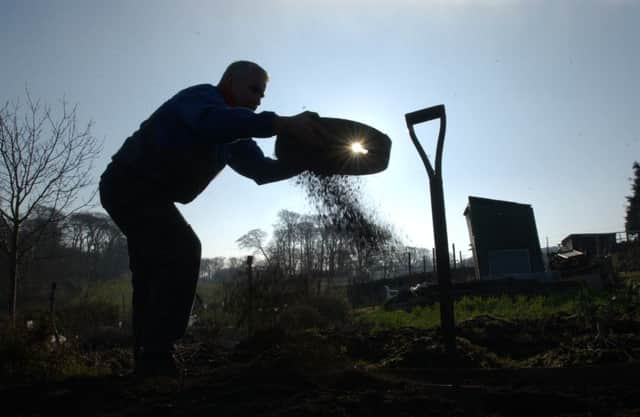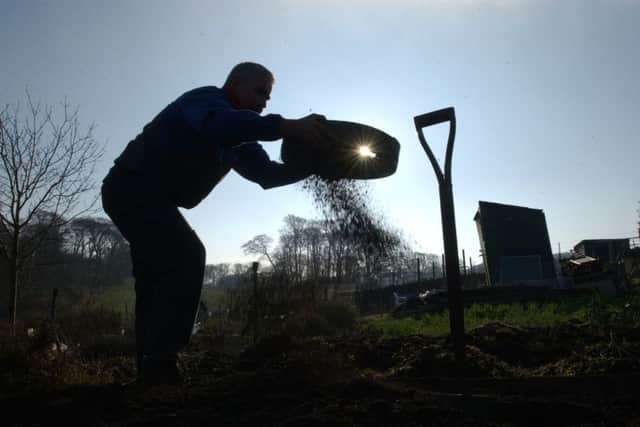Ten ways to live a greener life


Use your leftovers
Making meals using what you already have at home not only saves time and money – with food waste costing the average Scottish household £470 a year – it helps the environment too. Dr Caroline Holmes, climate impact scientist at the school of GeoSciences at the University of Edinburgh says: “Not only does reducing food waste reduce how much is made in the first place, but it also reduces the emissions from processing the waste after you get rid of it and the gases that are released by decomposing food.”
Her colleague, Professor Dave Reay, professor of carbon management and education, agrees: “In Scotland we throw out over half a million tonnes of food each year, and this food has very large environmental impacts through its production, transport and disposal. If such food waste was avoided it would cut greenhouse gas emissions by around 1.5 million tonnes a year – equivalent to taking one in four cars off our roads.”


Advertisement
Hide AdAdvertisement
Hide AdTo avoid wasting food, check what you already have in the kitchen before deciding whether you need to buy anything else, make a shopping list before you do hit the supermarket to help resist impulse shopping (eating before shopping for food also helps with this), use your freezer, and re-think the size of portions you serve. There are endless recipes available online for free that can inspire you on what to do with leftover portions or ingredients.
Choose charity shops
When even fashion designers are telling us to “stop shopping” – as Vivienne Westwood famously did, urging consumers to try not to buy anything for at least six months, and only purchase what they really need in order to cut down on waste – you know it’s time to rethink your stance on hitting the high street. Buying from vintage or charity shops is cheaper; makes for a less generic, and thus intrinsically more stylish, look than shopping in chain stores; keeps transportation emissions down and clothes out of landfill sites and reduces the demand for cheap throwaway fashion made using unethical manufacturing methods.
Leave the car at home
For shorter journeys consider leaving your car keys at home to walk or cycle, both of which are healthier alternatives that will get your body moving – helping to maintain weight, cut your chances of cancer and heart disease, keep stress at bay, and alleviate mental health conditions like depression and anxiety – as well as saving on emissions. For longer journeys consider car sharing schemes or public transport, both of which are more economical, as well as more environmentally friendly, options.
Eat locally produced, seasonal foods
Choosing foods that are in season, and those that are locally grown, cuts down on the carbon emissions involved in its transportation, as well as supporting local growers and producers. A shorter supply chain also means a lower level of carbon emissions overall, and food that’s grown in-season doesn’t need to be grown in heated greenhouses, meaning it takes less energy to produce.
Advertisement
Hide AdAdvertisement
Hide AdFood grown at the right time of year ensures optimum taste and nutrient levels too. Organic box schemes are an easy way to make sure you eat seasonally, or you could grow your own fruit and vegetables – this involves a little more effort than waiting for a delivery, but it’s cheaper, a good form of exercise and a proven stress-reliever. You don’t even need a big garden to grow your own – tomatoes, chillies, herbs, strawberries, lettuce, even potatoes can all be grown in pots on the window sill.
Ditch the plane and take the train
When you’re planning your next holiday or weekend away, think about whether you really need to head straight for the airline websites. Dr Holmes said: “Transport – including industrial transport, international flights and shipping – contributes over a quarter of all emissions. When I personally calculated my carbon footprint online, about half of it was my travel costs. One way to change this is how you travel. A train journey to London, for example, has under a fifth of the total emissions of flying, and by the time you factor in waits at the airport, getting to the airport and arriving early for check in, it’s not so much slower.”
And it’s not just UK destinations that can be easily reached without flying – you can travel by ferry to Ireland, Spain, France, the Netherlands and Belgium, or by Eurostar to France and Belgium, after which you are connected to any destination in Europe by cheap, fast and comfortable train services, all of which offer views far more varied than cloud cover.
Turn down your thermostat
Turn down your thermostat by just 1 degree and you could save up to £60 a year, as well as vital emissions – if everyone in Scotland did the same it would mean a reduction in emissions from houses of 10 per cent.
Reuse
Advertisement
Hide AdAdvertisement
Hide AdReusing what we already have means less demand for the production of new items, thus cutting down on carbon emission-heavy industry. Think about what could be repurposed and you’ll find the answer is plenty – use old jam jars to store nails and screws or buttons and safety pins, to mix salad dressings, as vases or drinking glasses or tea light holders, while empty ice cream cartons can be used for freezing leftovers or as a lunchbox, and old tyres can be used as planters for flowers or vegetables or to make a homemade rope swing. Instead of buying new furniture or kitchen units when you fancy a home makeover just repaint what you have, and extend the lifespan of your clothes by mending rather than throwing them out, either yourself or with the help of a local tailor.
Make your house energy-efficient
Having your home properly insulated, switching off lights and appliances when they’re not needed, switching to energy-saving lightbulbs, buying energy-efficient white goods when it’s time to replace them not only cuts carbon emissions and helps the environment but also reduces energy bills, while Dr Holmes has a suggestion that’s even easier: “Just go around the house shutting the windows, only heating the rooms you are in, and thinking about when you need to heat them.”
Donate
Whatever you can’t reuse or recycle, it’s highly likely someone else could. Donating clothes, shoes, books, household goods and furniture to charity shops or organisations such as the Bethany Trust which help homeless people helps the local community as well as reducing waste, and cutting demand for production. Many shops have recycling collection points for mobile phones, batteries and printer, toner and fax cartridges while community websites like Freecycle are a great way to offer up anything from CDs to sofas to leftover paint to anyone can collect it.
Cut down on packaging
Try to buy items with less packaging – which, not being biodegradable, will end up in a landfill or being burnt and thus producing carbon emissions. This is becoming easier as manufacturers and retailers catch on to the concerns of climate-aware consumers. You can buy loose fruit and veg rather than pre-packed, refill packs of coffee, spices and dishwasher tablets and concentrated diluting juices, deodorants and fabric conditioners. Avoid individually packaged items – buy these in multipacks – and buy items such as toilet rolls in bulk. Downloading music, books and movies rather than buying hard copies and using tupperware containers to store food instead of cling film or foil are other ways to cut down on packaging. You can also find out if you can still have milk delivered in glass bottles (which are recycled an average of 20 times each) in your area, using a post code checker such as this one: www.findmeamilkman.net.
• This article was produced in partnership with the Scottish Government
